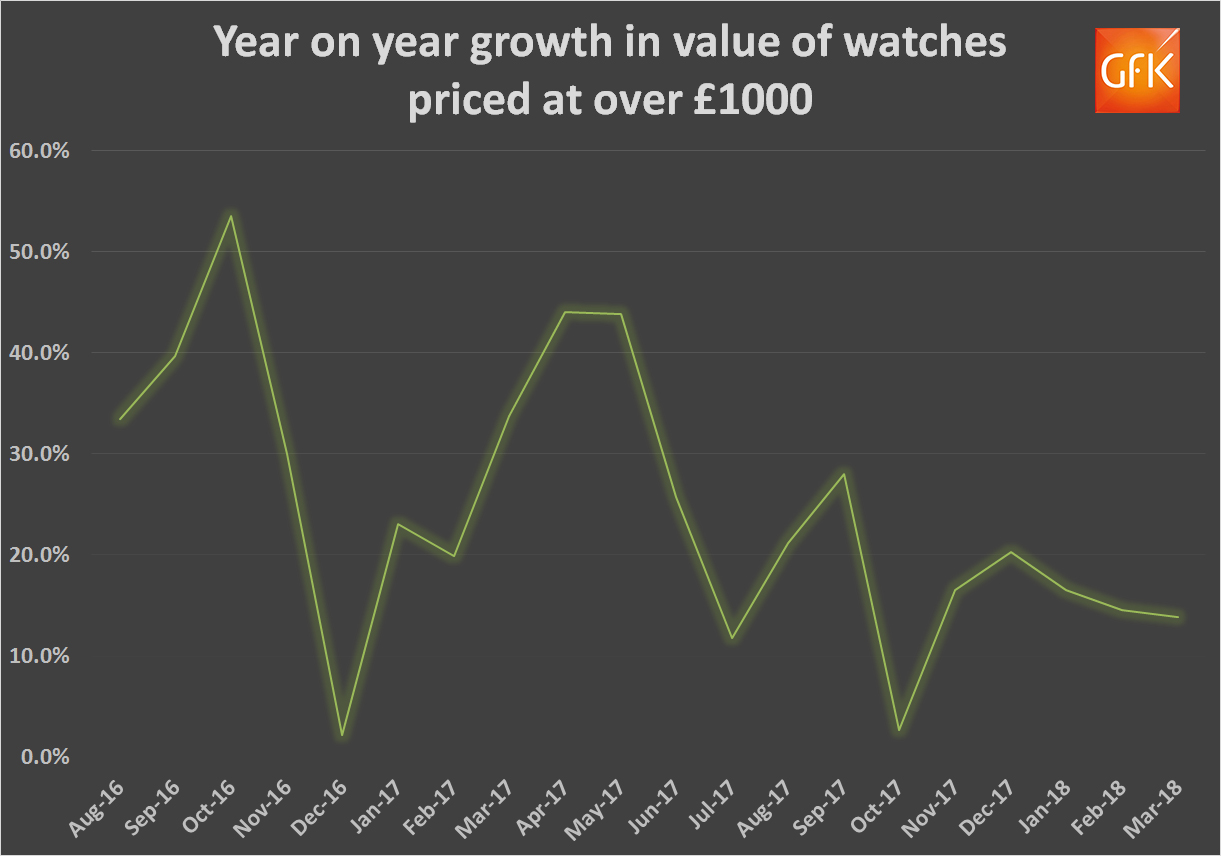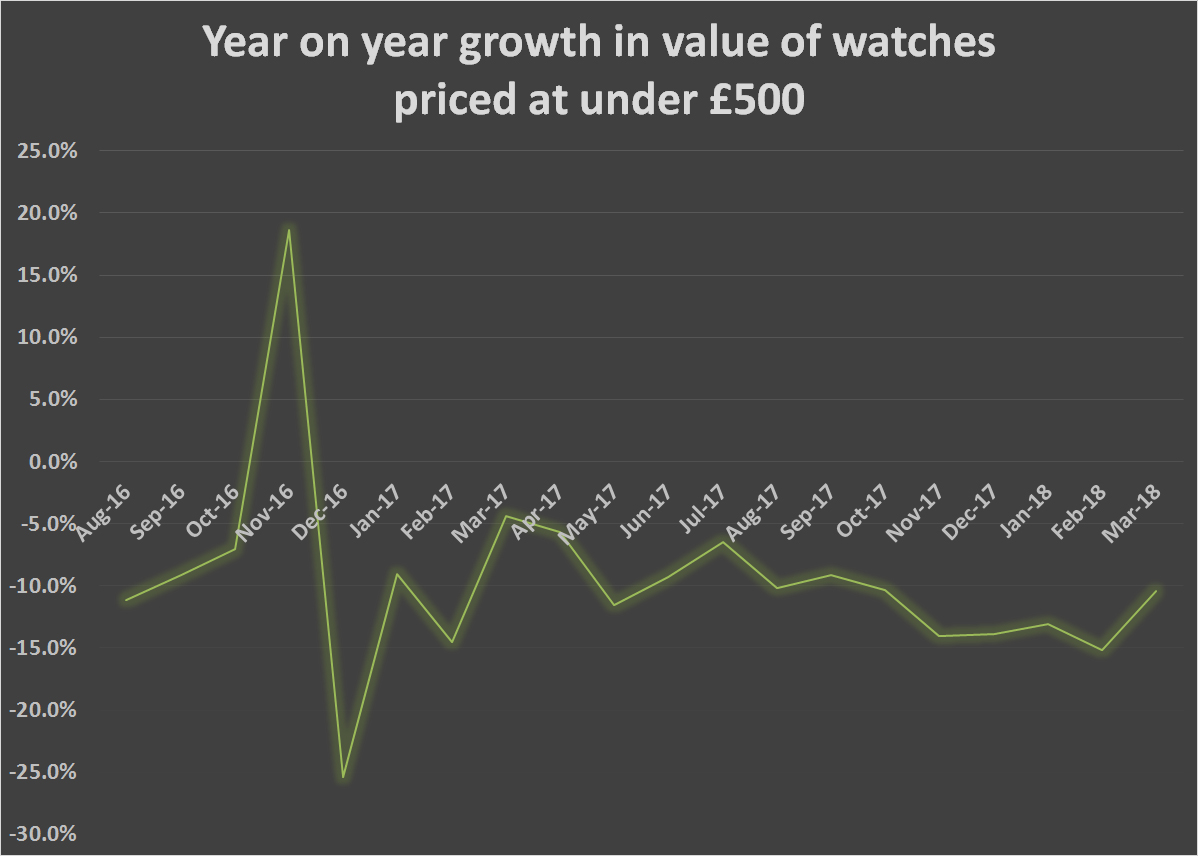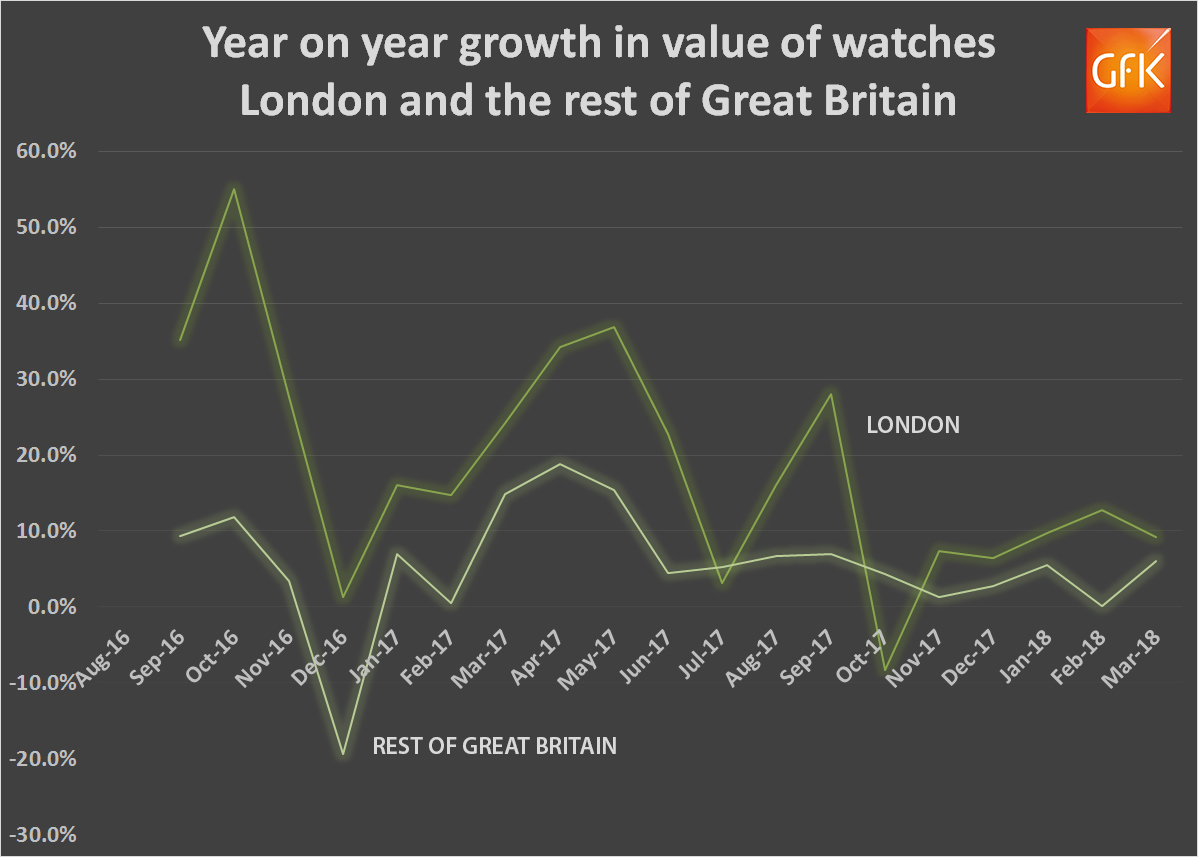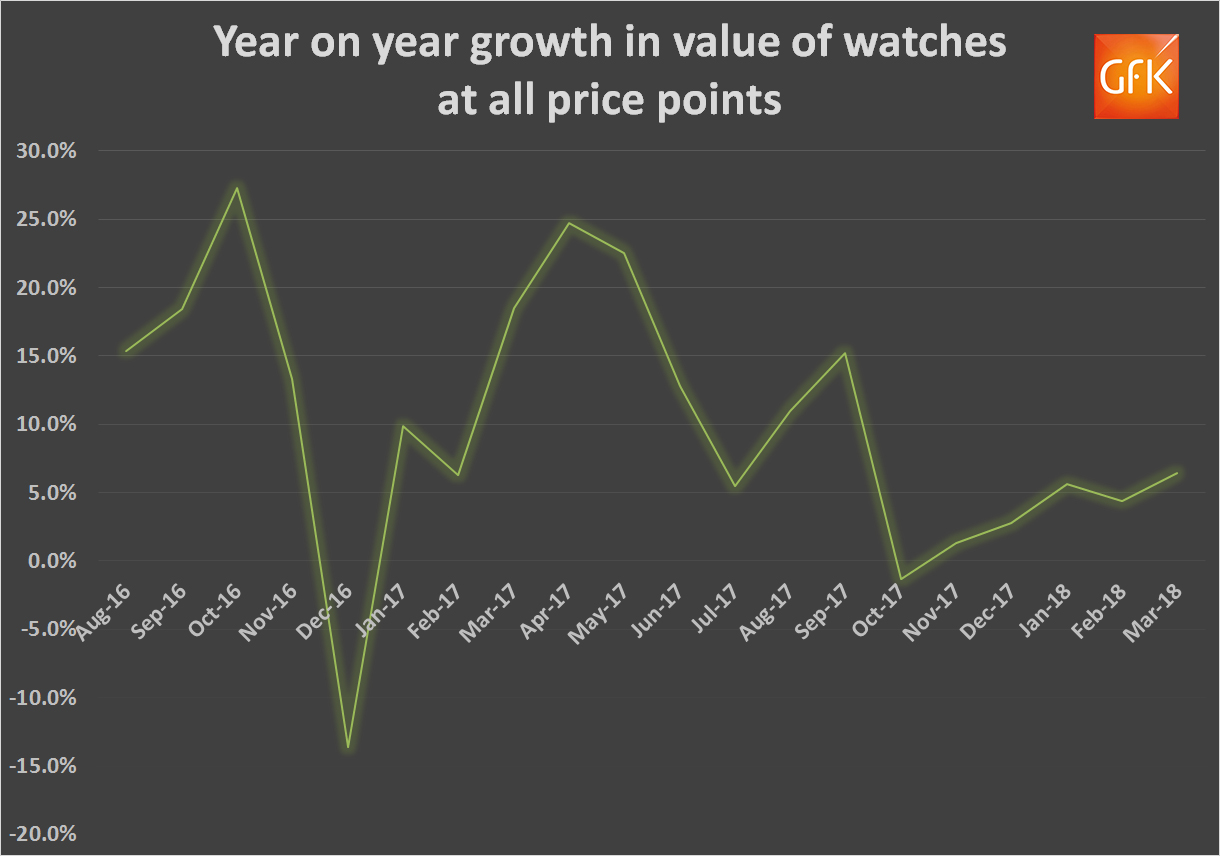Twelve months ago the UK was approaching its first anniversary after the Brexit vote crashed the pound and made luxury watches over 25% cheaper in this country than on the Continent. WatchPro argued at the time that the stellar performance was down to more than just a price differential, it was also down to the increasing attraction of Britain to tourists and the exceptional investment made by jewellers into creating the most sophisticated and professional retail environments for selling Swiss watches in the world. The fact that growth is continuing at the top end of the market into the first quarter of 2018 is testimony to the fundamental strengths of Britain’s watch industry in comparison to rival international markets, but our market leadership cannot be taken for granted, as GfK Senior Client Insight Director Paul Mitchell explains in this Q1 2018 review.
The luxury watch market continues to spearhead the industry’s performance, driving value sales up by 7.9% in the 12 months to the end of March 2018. Whilst this growth rate is falling and does not match the exceptional growth in the year following the EU referendum, its positive performance is a continuation of a trend; the strength of high-end sales and the appeal of high-end watch retailing in the UK is in stark contrast to the performance of the watch market at lower price points.
Sales above £1,000 continue to be robust, with value sales above this price point growing 20% year on year over the full 12 months. This rate of growth fell to 13.9% in March 18 vs March 17, which also brought the full market growth trend down to 6.4% in the same time period, a clear sign that the market is considerably less-buoyant than it has been over the past 18 months.


Within this there are several key trends. Firstly, the luxury Gents market remains strong. Annualised value growth for Gents watches is at 11%, whilst the year on year comparison for March 18 vs March 17 shows a 10.2% growth rate, so the slowdown in sales in this sector is slight. In contrast, sales of Ladies watches were down -2.2% over the full 12 months to March 2018, but were down -8.9% in March 18 vs March 17, demonstrating that the market’s overall declining value is, in part, due to a fall in high-end Ladies watch sales.
Annualised sales below £1,000 continue to trend negatively year on year. Sales for watches below £100 were down -11.5% over the full year, watches selling at £100-£500 were down -11.1% and models retailing for £500-£1,000 were down -5.0% in the same time period. Sales at all price points other than sub-£100 recorded a lower rate of decline when comparing March 18 vs March 17, though this is likely a short-term improvement as the picture for Q1 18 remains challenging (the rates of decline between Q1 18 vs Q1 17 were actually slightly higher than the full 12 months).
The challenges faced in the mass market have been present for a number of years. However, one notable trend in recent months is the slowdown in online sales. What was previously a potential route to market that offered some means of securing value sales growth is now showing a year on year decline. It may be that, with online sales now one third of all value and volume below £500, a plateau has been reached.

With sales under £500 continuing to show double-digit percentage decreases, it’s clear that this is not solely driven by consumer concerns over the UK economy and Brexit, together with a fall in sales from the peak of fashion brands popularity a few years back.
Research has demonstrated how Millennials and the generation which is following them, the iBrains (or generation Z) behave differently to older generations. These are people who have grown up in a fully digital world. With their level of engagement with Smartphones, these generations simply do not have the need to purchase a wrist watch in order to tell the time. They are also receptive to other devices worn on a wrist, whether these be Health & Fitness trackers or whether they be Smartwatches. This competition for that space on someone’s wrist is something that the traditional watch industry hasn’t had to face in the past, but this is only going to intensify in the future. The changing landscape is reflected in the many brands who are entering this space.
However, one further dynamic of this changing market is that the Jewellers and other traditional wrist watch retailers are now directly competing with other retailers, namely the consumer electronic and telecoms outlets which historically have a stronger relationship with tech brands. The strength of these brands is that they have a heritage and connection with consumers via their Smartphones, or their Health and Fitness Trackers. The benefits of and dynamic use of these devices for everyday life is a challenge to a traditional watch, which needs to position and promote itself as an alternative offering, whether that it from a heritage and sophisticated stance of a traditional wrist watch, or whether that it is from the position of an evolving traditional watch brand.
There remain clear opportunities for watch brands and jewellers within the mass market, but a clear strategy is needed to chart a way forwards.
 Prepared by:
Prepared by:
Paul Mitchell, Senior Client Insight Director
paul.mitchell@gfk.com / +44 207 890 9045
www.gfk.com/uk / www.twitter.com/gfk_en

